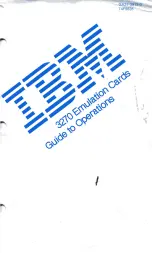
Drive Arrays and Fault Tolerance
Compaq Smart Array 5i Plus Controller and Battery Backed Write Cache Enabler User Guide
C-5
COMPAQ CONFIDENTIAL
Writer: Amy L. Laffitte File Name: l-appc Drive Arrays and Fault Tolerance
Codename: Executor Part Number: 266328-001 Last Saved On: 4/18/02 2:51 PM
For any configuration except RAID 0, further protection against data loss can be
achieved by assigning a drive as an
online spare
(or
hot spare
). This drive contains
no data and is connected to the same controller as the array. When any other physical
drive in the array fails, the controller automatically rebuilds information that was
originally on the failed drive onto the online spare. The system is quickly restored to
full RAID-level data protection. (However, in the unlikely event that another drive in
the array fails while data is being rewritten to the spare, the logical drive will still
fail.)
When you configure an online spare, it is automatically assigned to all logical drives
in the same array. Additionally, you do not need to assign a separate online spare to
each array; you can configure one hard drive to be the online spare for several arrays,
as long as the arrays are all on the same controller.
Fault-Tolerance Methods
RAID 0—No Fault Tolerance
This configuration (see Figure C-3) provides no protection against data loss when a
drive fails. However, it is useful for rapid storage of large amounts of non-critical
data (for printing or image editing, for example), or when cost is the most important
consideration.
Advantages
The advantages of RAID 0 are that:
•
It is the highest performance method for writes.
•
It has the lowest cost per unit of data stored.
•
All drive capacity is used to store data (none needed for fault tolerance).
Disadvantages
The disadvantages of RAID 0 are that:
•
All data on the logical drive is lost if a physical drive fails.
















































